Can the Trek Fetch+ 2 actually replace a car?
How the e-cargo bike changed the way a family got around
 Photo by:
Matt Stetson
Photo by:
Matt Stetson
This story is supported by Trek Bicycle.
My family started to feel a sense of panic. The Trek Fetch+ 2 we’d been testing for months would have to go back to the company. The feeling was odd because we—my wife, our nine-year-old kid and I—had been fine before the Fetch came along, getting around with our bikes, public transit and our car. But in eight months, the e-cargo bike changed how we got things done.
I didn’t see that change coming. Why not? Possibly there was a bit of arrogance at work. Cargo bikes like the Fetch+ 2 promise to be car replacements. My family had lived car-free until about two years ago. Even now, we seldom use our car in the city. I have to admit, though, that as the kid’s extra curricular activities have expanded and started taking us to various neighbourhoods beyond their cycling range, the four-wheeled vehicle has been getting pressed into service more and more because of its carrying capacity, and speed. Well, the jury is kind of out on the speed factor. Toronto traffic will make travelling even the shortest distance an excellent occasion for some deep podcast listening.
So let me tell you how the Trek Fetch+ 2 became an essential fixture in our family.
Haul it all with the Trek Fetch+ 2
If you’ll excuse a bit of boasting: I’m pretty awesome at carrying crazy stuff on my commuter bike—an old cyclocross machine with rear rack and panniers. So much is possible with enough bungee cords. About 10 years ago, I remember a concerned shop owner hovering nearby as I strapped a new child’s car seat to the back of my bike. “Um, I don’t think you should do that,” he said. “It’s all good,” I replied. And it was.
So, it’s quite seldom that I am wanting for carry capacity. But with the Trek Fetch+ 2, there’s almost no planning required before I head out to get things, no double checking my stash of bungee cords, and no passing on an errand because I’d run out of space. My e-cargo bike came equipped with a rear pannier kit, and a front pannier and rack kit. At the back, each of the two containers holds 44 l. At the front, each pannier has a 11.2-l capacity. In all, I could load the Fetch up with a whopping 81 kg (178 lb.) of stuff. I feel all these add-ons are actually essential for getting the most out of the Fetch+ 2.
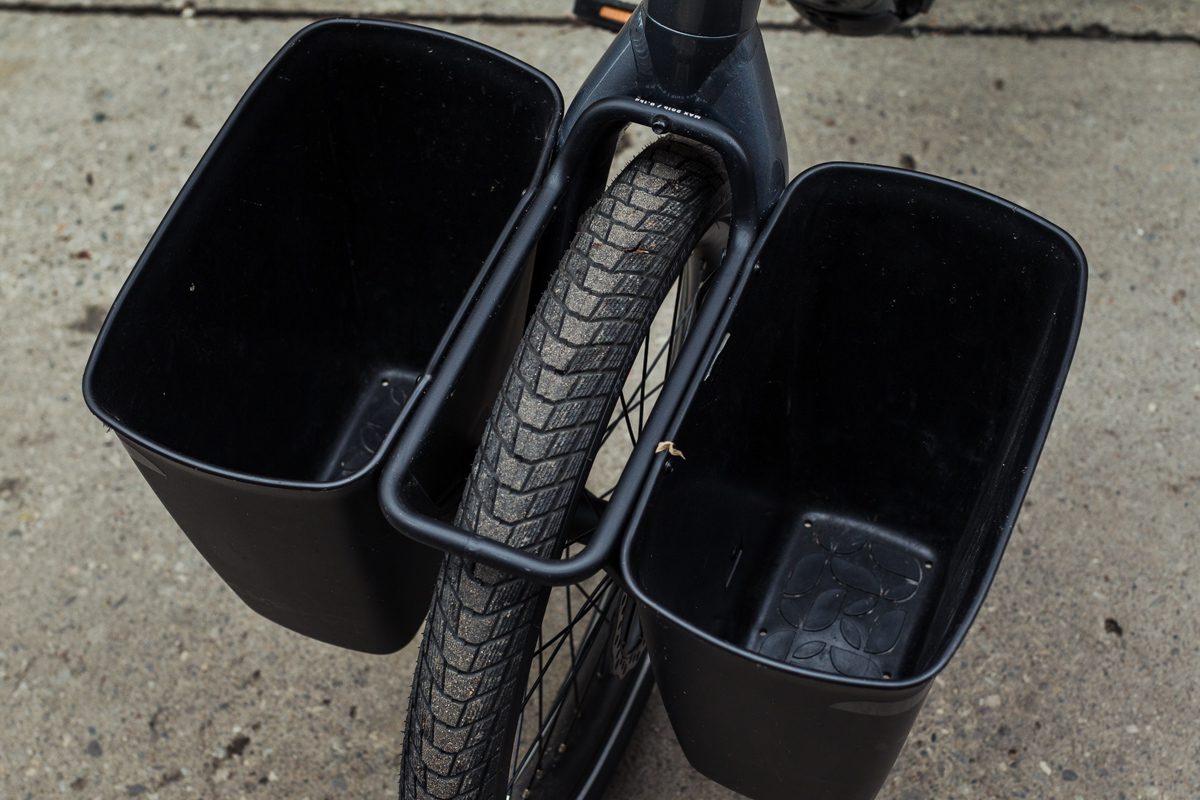
The bike also came with the family pack kit, which includes the pads that sit on top of the rear rack and the safari bar. If my kid were younger, I could have attached a child seat with a harness. But my kiddo could easily climb in the back. You can carry two children as long as they both weigh less than 36 kg (80 lb.). I asked my man at Trek if one person weighing less than 72 kg (160 lb.) could ride in the back. The answer is no. The maximum weight limit for the bike (including the weight of bicycle, rider and cargo) is 200 kg (441 lb.).
While I’m a long-time pannier user, the open-bin containers of the Fetch+ were new to me. I really liked how I could drop whatever I wanted right into them: my traditional panniers, a backpack, reusable grocery bags, my kid. A massive Kryptonite chain lock had a permanent spot in the front left pannier. A friend asked if people dumped garbage in the bins after I’d leave the bike parked out on the street. It’s a fair question. I’ve seen inconsiderate people put their disposable coffee cups in front baskets. So far, I’ve been lucky. The only garbage that’s been in the bins is stuff I’ve left there. When the panniers get grimy, they are easy to clean. They have drainage holes at their bottoms, allowing rinse water to drip away.

Some of the you-can-only-do-this-with-an-e-cargo-bike hauling scenarios include one random trip that had me carrying a sleeping bag and two cat fountains. On a jaunt to the park in the summer, we didn’t have to rule out any activities as we carried tennis rackets, baseball gloves, a soccer ball, frisbee, picnic blanket and some folding chairs. The only danger with the Fetch is that you can load the bike up with more groceries than you can carry up to your condo or into your house in one go.
The power at the heart of the e-cargo bike
A Bosch Performance Line Cargo drive unit with 85-Nm of torque provides the hauling power of the Fetch+. That’s a lot of oomph that makes cruising with the panniers loaded to their brims simple. The Bosch drive unit is pedal-assist. It only adds a certain percentage to the wattage you pump into the pedals. It cuts out at 32 km/h.
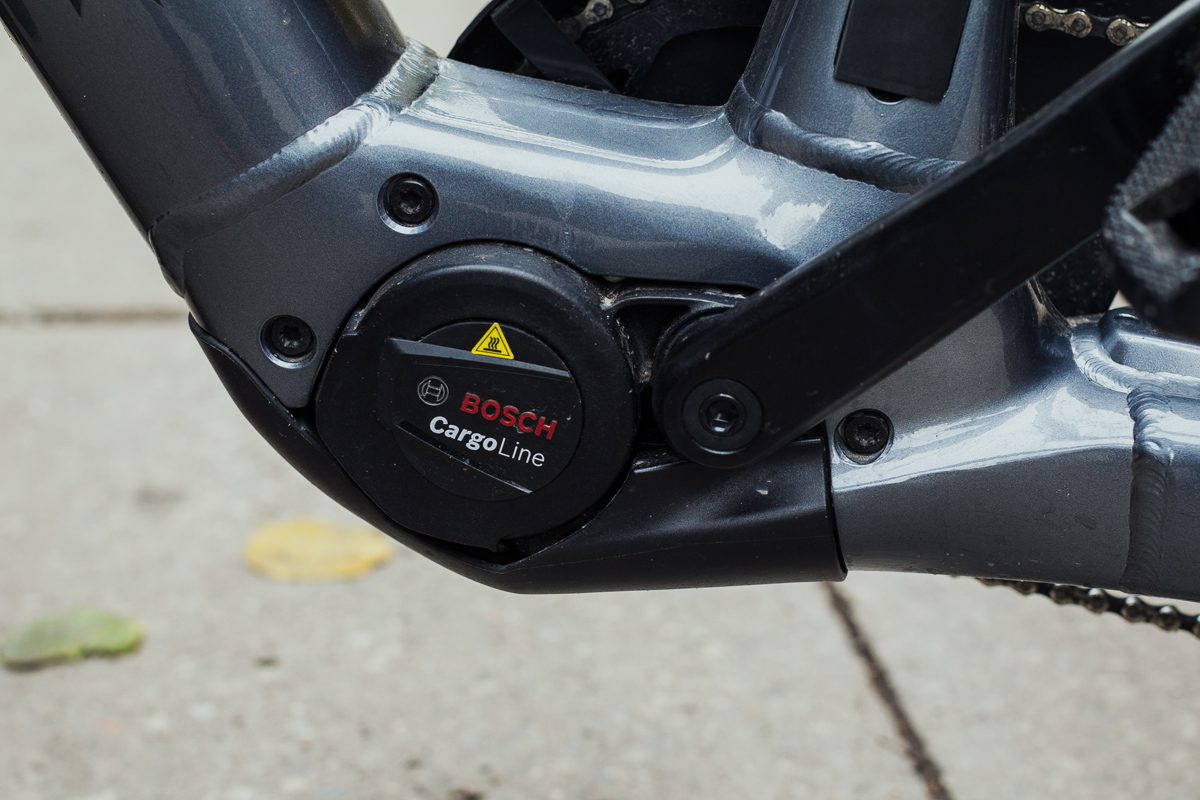
Powering the Performance Line Cargo is a 500-Wh Bosch PowerTube battery. Remember, the more watt-hours a battery has, the longer it will last. In the warmer months, I could get almost 70 km out of a fully charged battery. If I was more diligent about gearing—making sure to spin more than grind—and about using less assist, I could probably get more range. The system has four settings: eco, tour+, auto, cargo. Cargo gives you the most assist, but draws more juice from the battery. You turn on the system and cycle through assist modes using the LED remote on the handlebar. The remote also displays the battery life via five lights. To really manage range anxiety, get the Bosch eBike Flow app. It can give you range estimates for each mode. The app allows you to customize the behaviour of the ride modes so you can get the performance you prefer. I would pop my iPhone on the bike’s smartphone mount to monitor everything in real time.
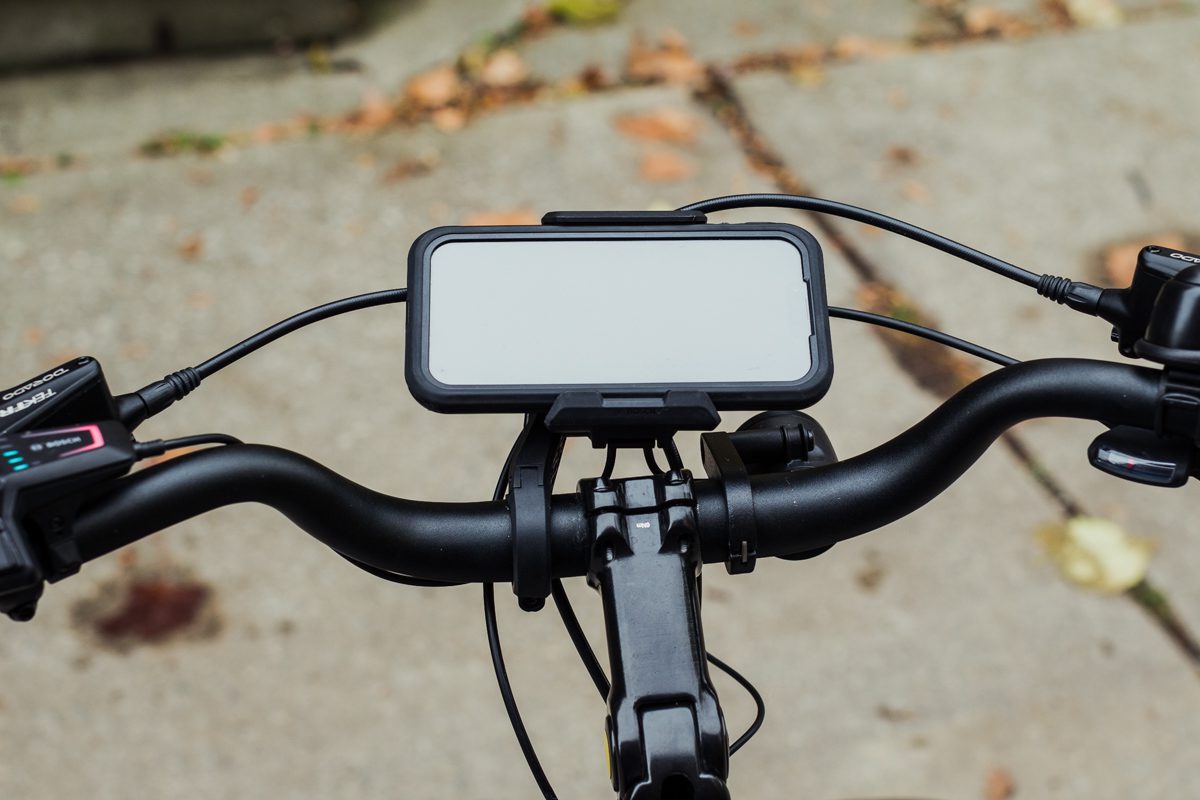
It’s best to charge up the battery once it gets close to 20 per cent; however, I did drain the sucker completely once. (I’m testing, right?) After that, It took almost three hours and 45 minutes to charge it fully. As will all batteries, I noticed it drained much more quickly in the winter. For the cell’s health, I’d bring it inside where it could stay nice and warm when not in use.
The Fetch+ 2 has a well-thought-out spec. The brakes are the powerful four-piston HD-T737 hydraulic disc set with six-bolt, 180-mm Tektro wave rotors. The drivetrain is largely Shimano parts: Deore M4100 shifter, Deore M6000 Shadow Plus long-cage rear derailleur and 10-speed, 11-36 tooth Shimano HG50 cassette. Connected to the drive unit is a ProWheel crank with 46-tooth chainring. The kickstand is custom for the bike.
How the Trek Fetch+ 2 changes how you get around with your kid by bike
“You want to grab some jerk chicken for lunch?” I asked my kid. It was late in the morning on a warm, sunny Sunday this past fall. They said yes, and off we went on the Fetch+ 2 to one of my favourite places for that dish. The restaurant is about 7.5 km from our place. Google Maps says it takes 25 minutes by car or by bike to get there (45 minutes by public transit). Twenty-five minutes by bike, yes. By car? Nope. Add 10 minutes more for the construction along the way, and then at least 30 minutes to find parking in the Kensington Market neighbourhood. For any other mode of transportation, we would have had to have done some advanced planning. With bikes, you can just go.
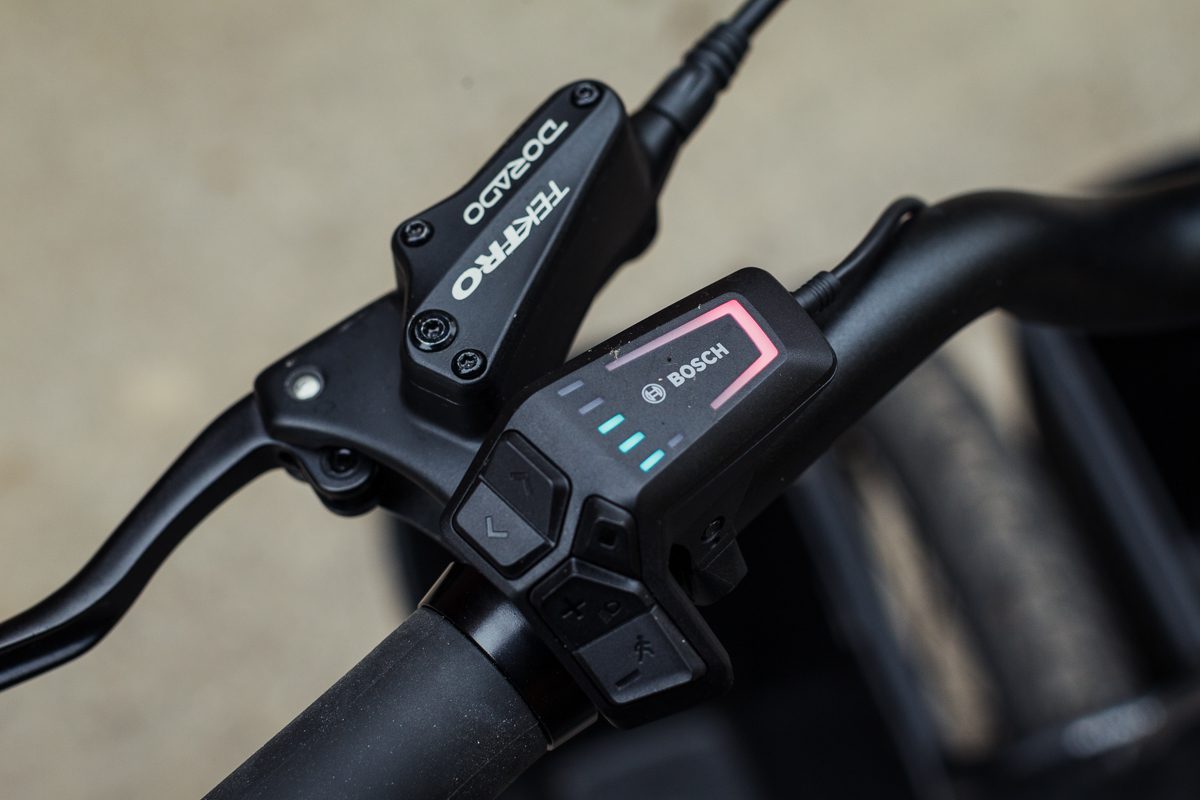
Now, my kid is comfortable on a bike. They’ve been exposed to two-wheel vehicles all their life. But at age 9, their speed is, well, kid-speed. Sitting on the back of the Fetch+, they’re just as fast as me. Even with the last-minute plan, we could get lunch by lunchtime.
The e-cargo bike also speeds up shorter trips with the kid greatly. Take the 1.2-km trip to school, for example. It’s a great bike ride when each of us are on our own machines. But as any parent knows, when you are riding with your grom on busy city streets, you are, in a sense, driving for two. You’re calling out hazards to your kid, corking corners or cross streets to make sure feisty motorists don’t try to pull anything and generally riding more defensively than you usually do. Now, I’m not saying I ride more aggressively when my kid is on the back of my bike. No. We just move as one through the city, with the taller, more experienced rider at the helm. The Fetch+ 2 shaves minutes from the trip from our door to that of the school. On our first few trips to school, I kept misjudging the time, so we had time for a lap of a nearby park.
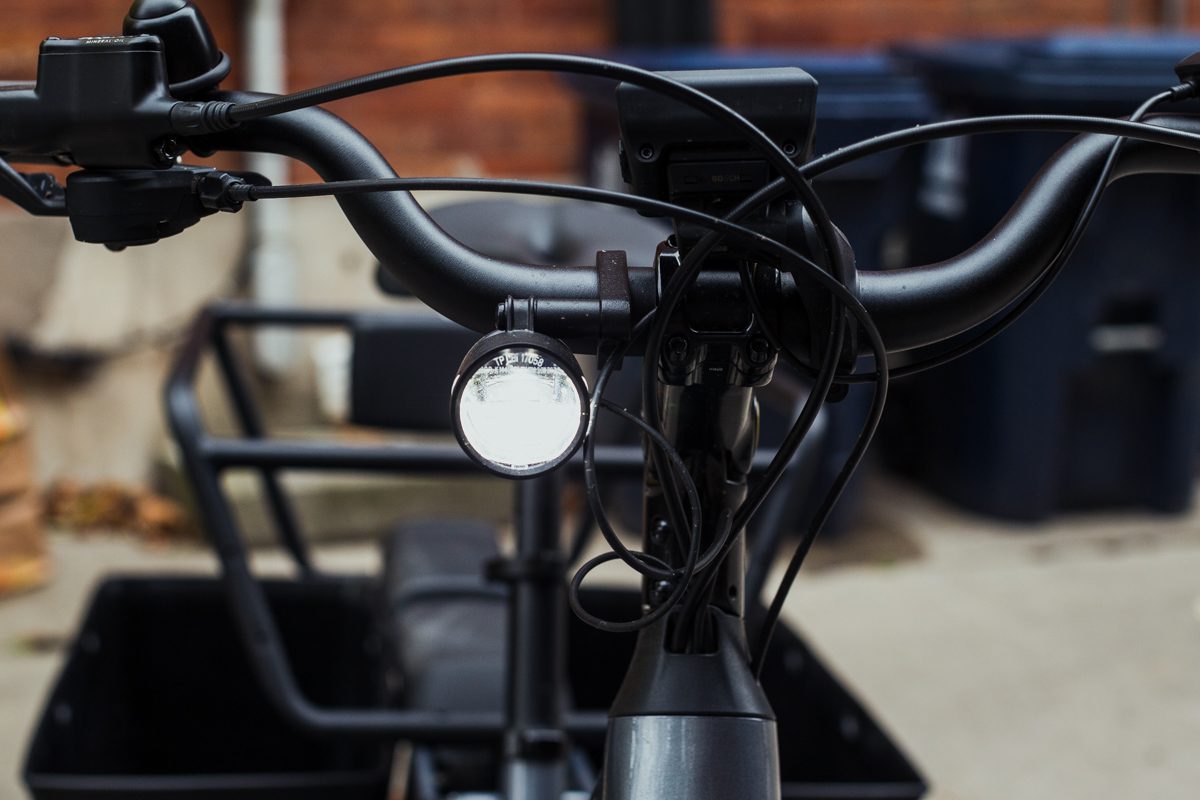
My colleague shuttled a few kids around on the Fetch. His six-year-old son and his friend loved it. He did notice that things can get pretty wobbly, especially at lower speeds, with the two kids moving around. At a stop, both feet need to be on the ground. My colleague’s daughter, 4, wasn’t ready for the speed of the e-cargo bike right from the start. It was too fast. But she got used to it. She even thought it was pretty rad. Yes, “rad” was in fact the word she used. The lesson: you do need to bring some younger passengers up to speed.
How long will your kid ride in the Trek Fetch+ 2?
My kid used to love the bike trailer we had. Then they didn’t. I remember the day. It was in Grade 1, which I thought was too young for them to feel self-conscious about getting a bike-trailer ride. But after a school dropoff, they said, “Daddy, I don’t want to go in the trailer anymore.” When I first got the Trek Fetch+ 2, I wondered if the kiddo would want to get shuttled around in it. It turns out, a cargo bike is totally all right for my fourth grader. They enjoy the ride.

With my kid approaching 10 in a few months, I’m wondering how much longer they’d want to ride in the back of the Fetch. Based on their weight, we should be good for a while. But when would they be psychologically “too big” for the bike? I asked them and was informed that if we still had a cargo bike for Grade 5, they wouldn’t want to ride in the back.
So, if you’re thinking of getting an e-cargo bike to travel with your kid, get it sooner rather than later. We all know kids grow up too fast. You can get them on the bike as soon as they are ready for a bike seat with a harness, which you can attach to the bike’s back rack. I should add that you shouldn’t just get the bike just to carry your kid as they grow. The e-cargo bike changes your family logistics for the better. You don’t want to wait on that either.
How the Trek Fetch+ 2 changed family logistics for my household
This past spring, the kid played soccer every Wednesday night. Games were at a field around 4 km away from home. For the kid and I to bike there, it’s a bit of a trek on busy roads, or a bigger trek to take quieter roads, and there are some good hills. I imagine the pedal home after a game would be a total slog. Needless to say, we never took our analog bikes. With the Fetch+, we could not only get to games faster than riding regular bikes, but faster than taking a car, which we were using before we’d gotten the e-cargo bike. For trips in the 4 to 10 km range, even as far as 15 km, the Fetch+ really is the vehicle of choice when the kid has to be somewhere.
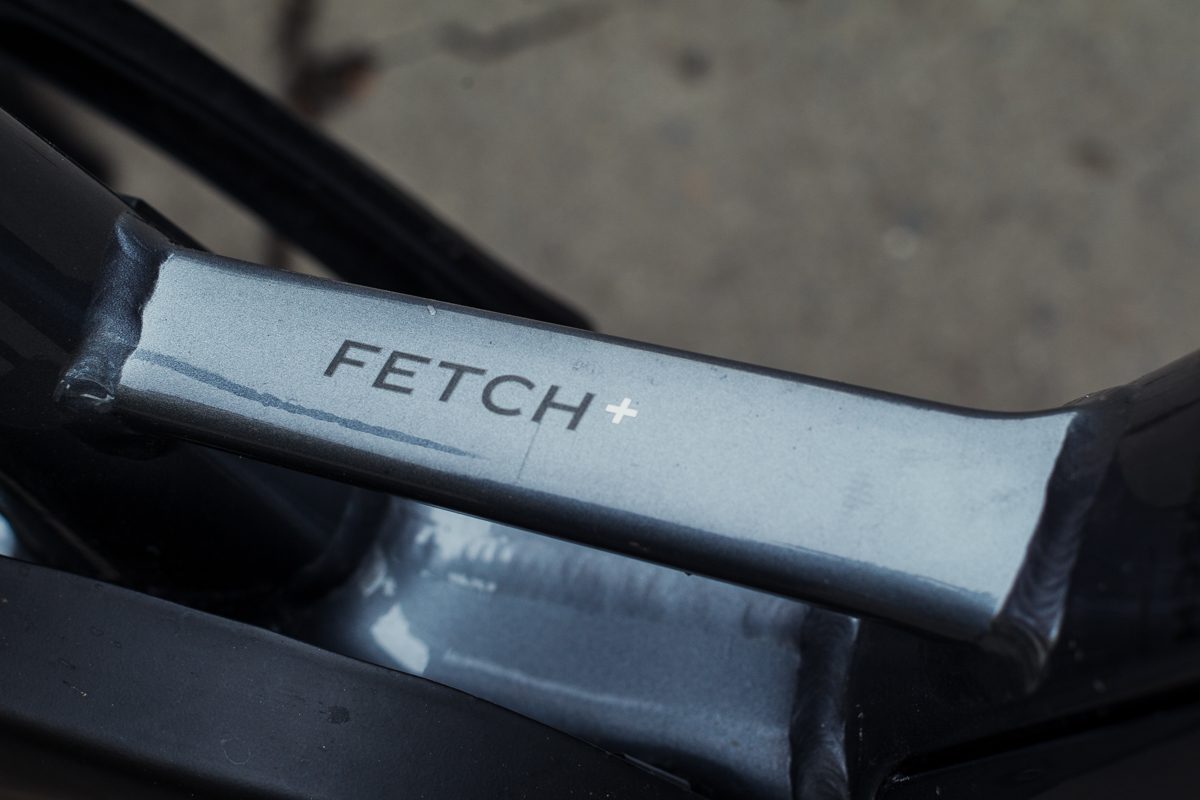
But there’s more to it than speedy kid dropoffs and pickups. You can get more done with Fetch For example, with my regular commuter bike with panniers, I can get cat litter, no problem. With our regular bikes, the kid and I can ride to one of their friend’s houses. I can combine the playdate with cat-litter getting with my commuter. But, the speed and ease with which I can do both those activities with the Fetch+ totally trumps the analog rides. It was my family’s newfound ability to combine rides and chores that previously would have been split up into multiple outings with our regular bikes that really blew our minds (at least my mind). In short, we could get way more done with the Fetch+ than we could with our analog bikes or our car. For this reason, we had separation anxiety as the bike’s return date loomed.
The “pleasure” of parking
You’ll recall from our trip to my favourite restaurant for jerk chicken that parking would have been an issue. Even the parking at the kid’s soccer field filled up quickly. With the Fetch+, parking is not a problem at all. Because of the bike’s size, however, the bike isn’t my first choice for solo errands for small items. Locking up my regular bike at a busy rack is quicker than the Fetch+. Still, if I’m getting a lot of stuff, the e-cargo bike is the way to go.

Getting nods of approval you wish you got with other bikes
For more than 10 years, I’ve been reviewing the best road bikes in the world—high-end carbon-fibre whips that win Tour de France stages. These super bikes are awesome. I know they’re wicked. You know they’re wicked. In the summer, when I’m kitted up really nicely and I’m on one of these super bikes, I not only feel great, but I’m pretty sure I look great, too. And who notices? Well, not as many people as you’d expect (or I’d hope, for that matter).
When I ride the Fetch+ around town, people notice. Their nods or looks say everything from, “Wow, that is cool,” “That looks really handy” or “What?!” Either way, I feel I’ve gotten way more positive attention with the Fetch+ than I have with any super bike. Sorry Trek Madone SLR.
Go even bigger with the Trek Fetch+ 4
One afternoon, I took Trek Fetch+ 2’s bigger sibling out for a spin and felt like the king of the road. The Trek Fetch+ 4 has a bucket in the front that can hold 80 kg (175 lb.). There’s space for for kids. (With an additional bike seat, you could put another on the back.) The maximum weight limit for the bike (including the weight of bicycle, rider and cargo) is 250 kg (551 lb).

The Fetch+ 4 is slightly more challenging than the Fetch+ 2 to manoeuvre. What’s cool about the bigger bike is that it uses a system of cables to give you a 1.3 steering ratio. The handlebar can turn as much as 65, while the front wheel can move to 85 degrees. The rig can handle pretty tight turns. Adding to the ride feel is a SR Suntour Mobie A32 fork with 50 mm travel.
Speaking of travel, the Fetch+ 4 has a TranzX JD-YSP28PLQ dropper post with 200-mm travel. It is great for letting you get the leg extension you want for your ride, while ensuring you can plant both your feet on the ground at a stop. I wish the Fetch+ 2 was spec’d with a dropper. The travel makes swapping the bike between riders super easy. While my wife and I had little problem adjusting the saddle height on the Fetch+ 2 with its two quick-release collars, a dropper is even faster.
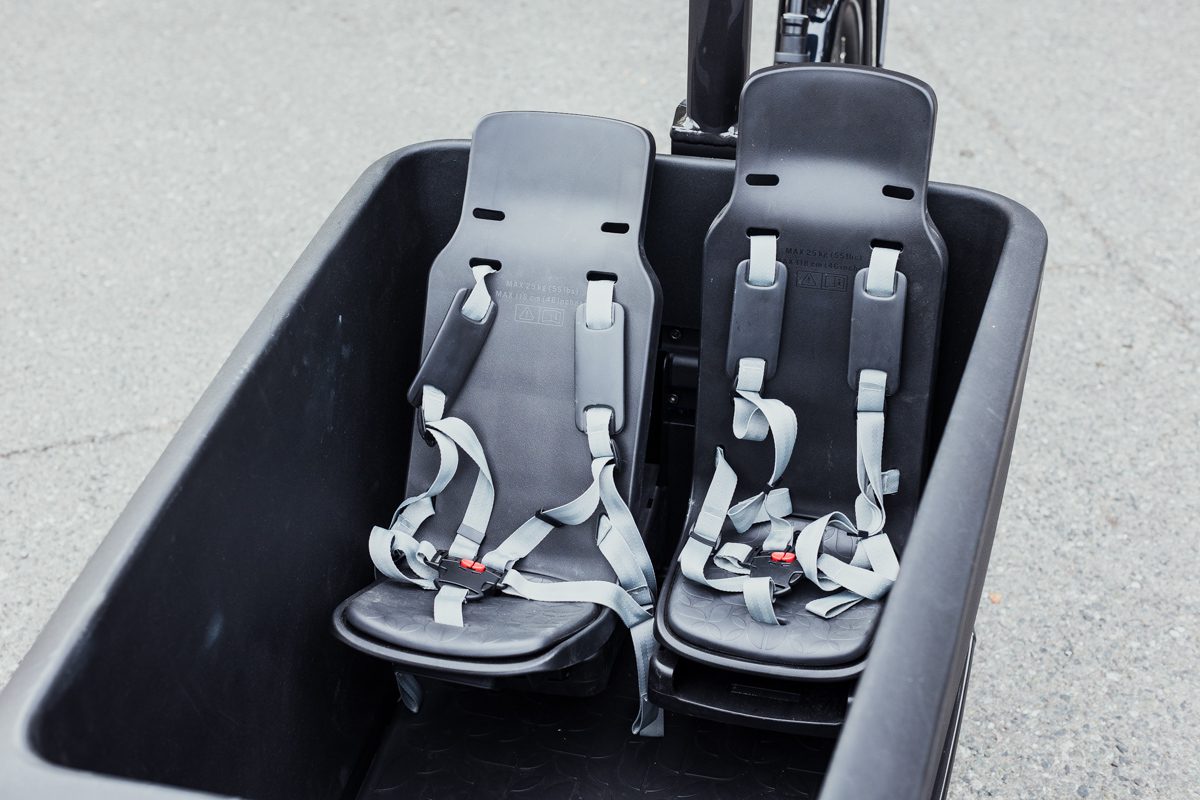
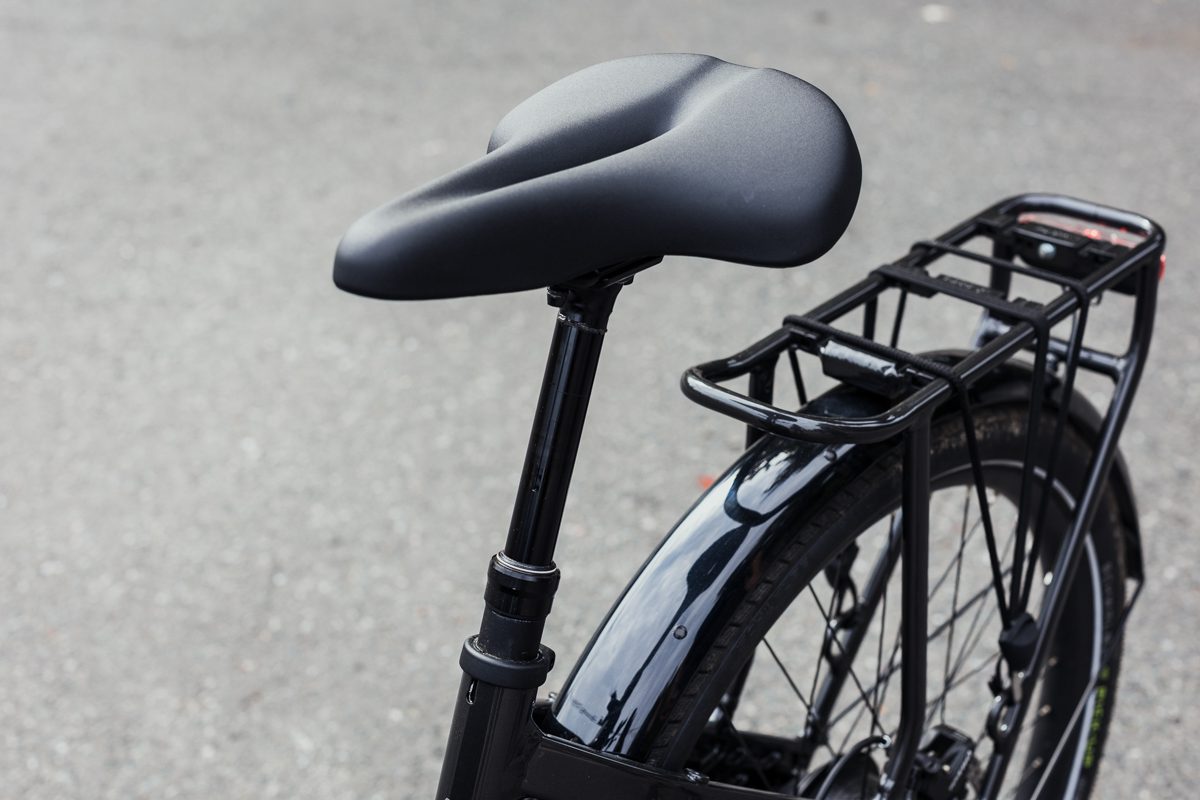
Can the Trek Fetch+ 2 replace a car?
Yes. 100 per cent. While the Fetch+ 2 did probably replace a few analog bike trips, most of the rides my family used the bike for would have been car or public transit outings. The e-cargo bike also allowed us to do a combination of errands that would have been more challenging on our regular bikes and that would have taken longer to do with a four-wheel vehicle. With the Fetch+ around, it’s like we had a second car, one that didn’t need gas, was easy to park in the city and that got around motor-vehicle traffic congestion easily.
Man, we’re going to miss that bike.
The Canadian prices of the Trek Fetch+ 2 and its accessories
| Trek Fetch+ 2 | Price |
|---|---|
| Base model | $7,500 |
| Trek Fetch+ 2 family pack kit | $415 |
| Trek Fetch+ 2 rear pannier kit | $230 |
| Trek Fetch+ 2 front pannier and rack kit | $230 |
Total price for the bike tested: $8,375
Find out more about the Trek Fetch+ 2 at trekbikes.com.

